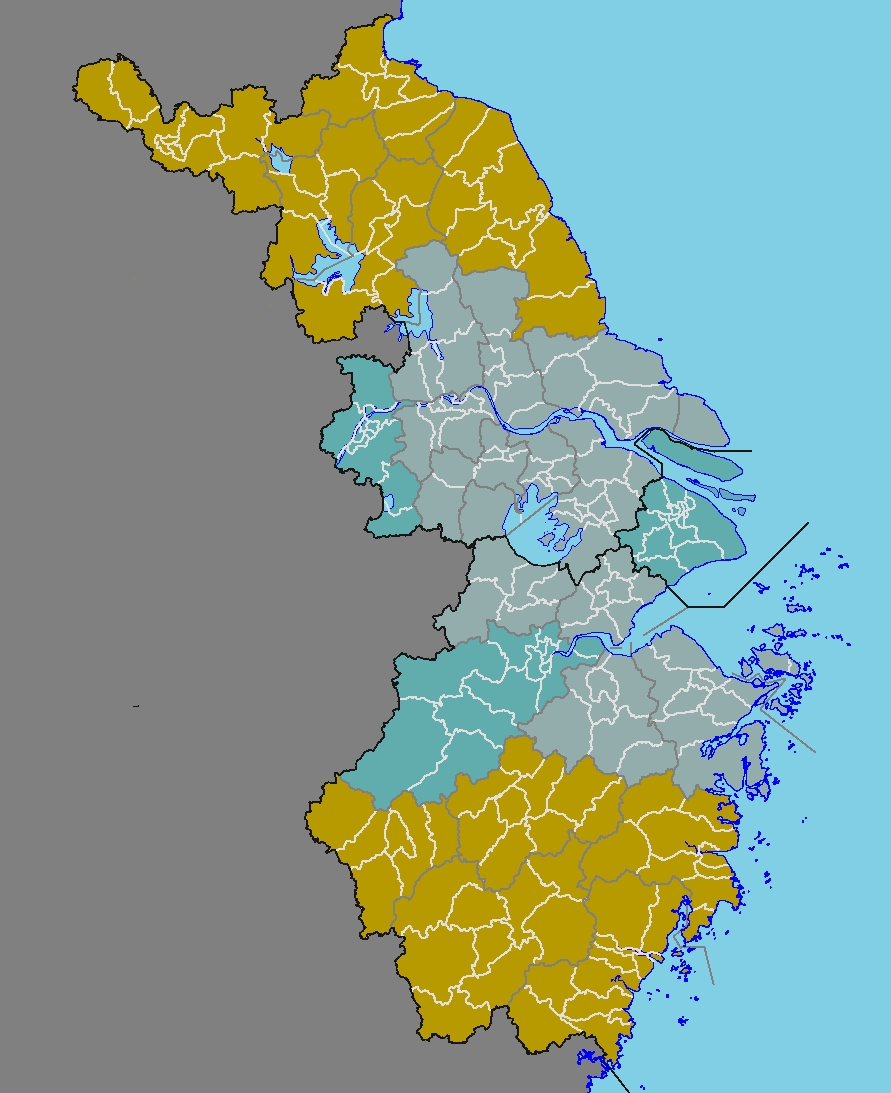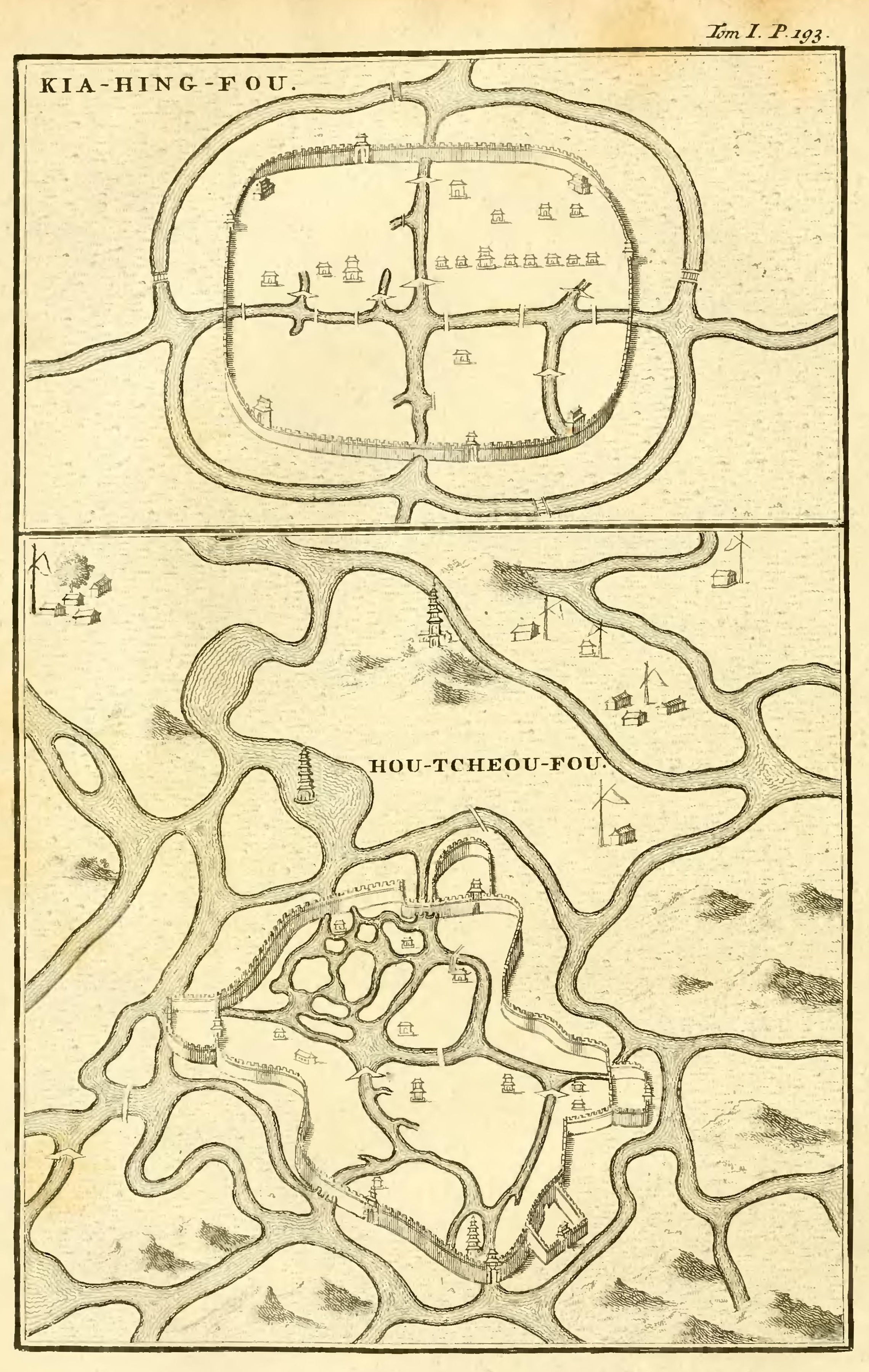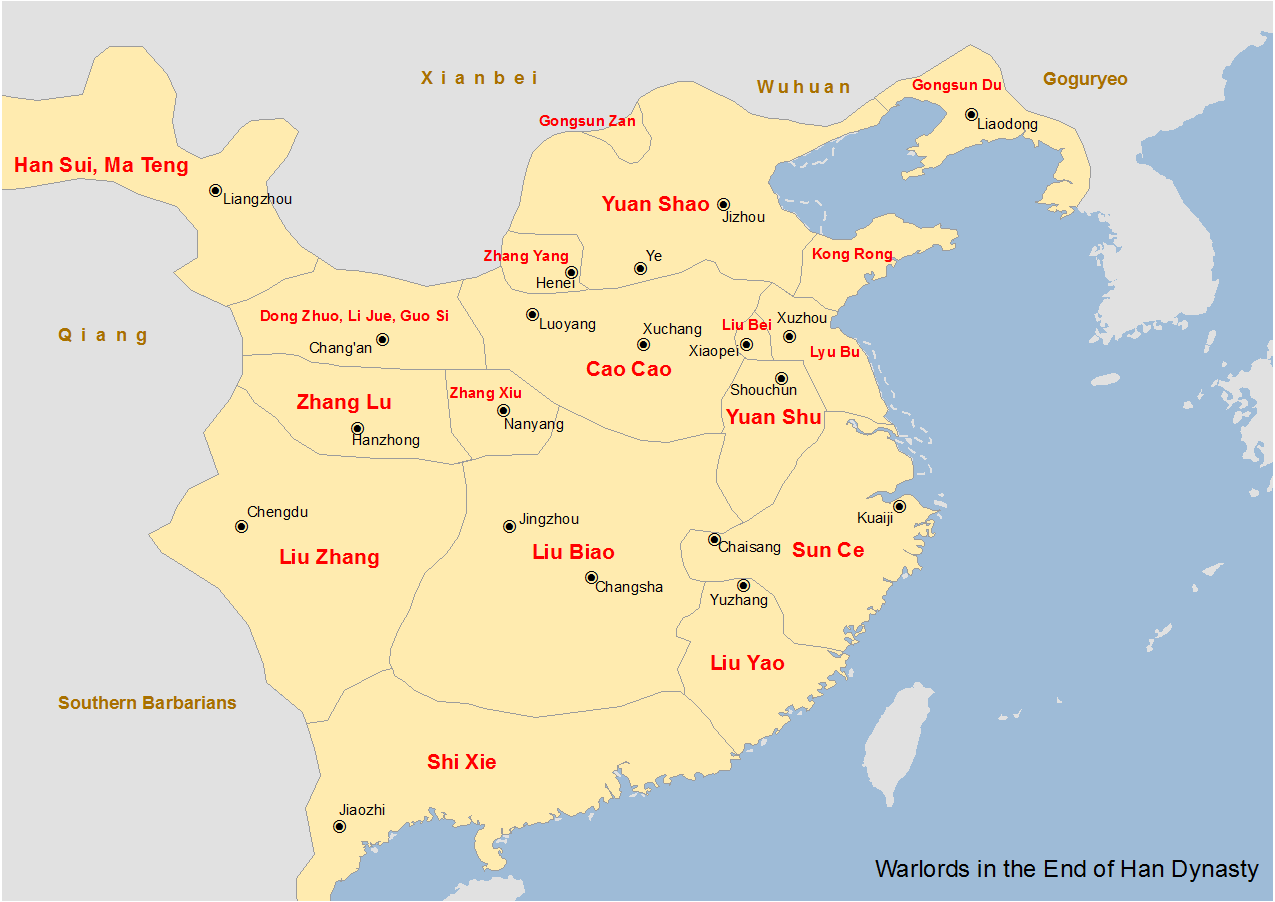|
Hu Zong
Hu Zong (183–243), courtesy name Weize, was a government official, writer, poet and military general of the state of Eastern Wu in the Three Kingdoms period of China. Early life Hu Zong was from Gushi County, Runan Commandery (), which is in present-day Henan. He lost his father at a young age. When chaos broke out in central China towards the end of the Eastern Han dynasty, Hu Zong and his mother fled south across the Yangtze to take shelter in the Jiangdong region. In 196, after the warlord Sun Ce appointed himself as the Administrator of Kuaiji Commandery, he recruited a 13-year-old Hu Zong as a household attendant and ordered him to remain in Wu Commandery (around present-day Suzhou, Jiangsu) and serve as a reading mate to his younger brother, Sun Quan.(孫策領會稽太守,綜年十四,為門下循行,留吳與孫權共讀書。) ''Sanguozhi'' vol. 62. Service under Sun Quan in the Eastern Han dynasty Following Sun Ce's death in the year 200, Sun Quan ... [...More Info...] [...Related Items...] OR: [Wikipedia] [Google] [Baidu] |
Sun Quan
Sun Quan (, Chinese: 孫權) (183 – 21 May 252), courtesy name Zhongmou (), posthumously known as Emperor Da of Wu, was the founder of the Eastern Wu dynasty, one of the Three Kingdoms of China. He inherited control of the warlord regime established by his elder brother, Sun Ce, in 200. He declared formal independence and ruled from 222 to 229 as the King of Wu and from 229 to 252 as the Emperor of Wu. Unlike his rivals Cao Cao and Liu Bei, Sun Quan was much younger than they were and governed his state mostly separate of politics and ideology. He is sometimes portrayed as neutral considering he adopted a flexible foreign policy between his two rivals with the goal of pursuing the greatest interests for the country. Sun Quan was born while his father Sun Jian served as the adjutant of Xiapi County. After Sun Jian's death in the early 190s, he and his family lived at various cities on the lower Yangtze River, until Sun Ce carved out a warlord regime in the Jiangdong region, ... [...More Info...] [...Related Items...] OR: [Wikipedia] [Google] [Baidu] |
Wu Commandery
Wu Commandery was a commandery of imperial China. It covers parts of the contemporary Northern Zhejiang and Southern Jiangsu. The capital of Wu commandery was Wu (today's Suzhou). Major counties of Wu commandery include Wu (county), Yuhang county, and Huating county which later became known as Suzhou, Hangzhou and Shanghai. History During its existence, Wu commandery was ruled by various dynasties and regimes. Chronologically, Han dynasty, Eastern Wu, Jin dynasty, Liu Song dynasty, Southern Qi dynasty, Liang dynasty, Chen dynasty, Sui dynasty and Tang dynasty governed Wu commandery in sequence. In the year of 129, Wu commandery was established during the reign of emperor Shun of Han. When Kuaiji Commandery was divided, lands west of Qiantang river in Kuaiji commandery formed the new Wu commandery. After the division of Kuaiji, Wu constitutes one of the commanderies of Yang Province. In 195, local strongman of Fuchun county Sun Ce acquired the entire Wu commandery without ... [...More Info...] [...Related Items...] OR: [Wikipedia] [Google] [Baidu] |
Zhejiang
Zhejiang ( or , ; , also romanized as Chekiang) is an eastern, coastal province of the People's Republic of China. Its capital and largest city is Hangzhou, and other notable cities include Ningbo and Wenzhou. Zhejiang is bordered by Jiangsu and Shanghai to the north, Anhui to the northwest, Jiangxi to the west and Fujian to the south. To the east is the East China Sea, beyond which lies the Ryukyu Islands. The population of Zhejiang stands at 64.6 million, the 8th highest among China. It has been called 'the backbone of China' due to being a major driving force in the Chinese economy and being the birthplace of several notable persons, including the Chinese Nationalist leader Chiang Kai-shek and entrepreneur Jack Ma. Zhejiang consists of 90 counties (incl. county-level cities and districts). The area of Zhejiang was controlled by the Kingdom of Yue during the Spring and Autumn period. The Qin Empire later annexed it in 222 BC. Under the late Ming dynasty and ... [...More Info...] [...Related Items...] OR: [Wikipedia] [Google] [Baidu] |
Huzhou
Huzhou (, ; Huzhounese: ''ghou² cieu¹'') is a prefecture-level city in northern Zhejiang province (Hangzhou–Jiaxing–Huzhou Plain, China). Lying south of the Lake Tai, it borders Jiaxing to the east, Hangzhou to the south, and the provinces of Anhui and Jiangsu to the west and north respectively. As of the 2020 census, its population was 3,367,579 inhabitants, of whom 1,015,937 lived in the built-up (''or metro'') area made of Wuxing District as Nanxun District is not being conurbated yet. Location Huzhou, in its general aspect, is in the center of the Yangtze River Delta Economic Area, with the city center south of the Chinese third largest freshwater lake Lake Tai. There are transportation links to the provincial capital of Hangzhou away in the south, Jiangsu and Anhui province in the west, and the metropolitan municipality of Shanghai to the northeast. Flowing quietly through the city is the Changxing-Huzhou-Shanghai Channel, it is also referred to as the "Ea ... [...More Info...] [...Related Items...] OR: [Wikipedia] [Google] [Baidu] |
Shi Yi (Eastern Wu)
Shi Yi ( 190s – 240s), courtesy name Ziyu. After local service that saw him bullied into name change, he fled south during the civil war and became a trusted officer to Sun Quan the future Emperor of Eastern Wu during the Three Kingdoms period of China. A frugal man, he would become a tutor to Princes, diplomat, he rejected military rank and rewards he felt he was undeserving of. Life under the Eastern Han dynasty Shi Yi was from Yingling County (), Beihai State (), Qing Province, which is located southeast of present-day Changle County, Shandong. He started his career as an assistant official in the county office before progressing in the early 190's to serve on the staff of Kong Rong, the Chancellor of Beihai State. Shi Yi's original family name was ''Shi'' () and when Kong Rong heard about it, he made fun of Shi Yi's family name, saying that the character ''shi'' () had one stroke less than the character ''min'' (), indicating the common people, so suggested that Shi Yi ch ... [...More Info...] [...Related Items...] OR: [Wikipedia] [Google] [Baidu] |
Zhenjiang
Zhenjiang, alternately romanized as Chinkiang, is a prefecture-level city in Jiangsu Province, China. It lies on the southern bank of the Yangtze River near its intersection with the Grand Canal. It is opposite Yangzhou (to its north) and between Nanjing (to its west) and Changzhou (to its east). Zhenjiang was formerly the provincial capital of Jiangsu and remains as an important transportation hub. As of the 2020 census, its total population was 3,210,418 inhabitants whom 1,266,790 lived in the built-up (or metro) area made of the 3 urban districts. The town is best known both in China and abroad for its fragrant black vinegar, a staple of Chinese cooking. Names Prior to the adoption of Hanyu Pinyin, the city's name was typically romanized as or Former names include Jingkou and Runzhou. History A part of Zhenjiang was the possession of Ce, who was created the Marquess of Yi in the early Western Zhou. Then the region was renamed Zhufang and Guyang, supposedly. Afte ... [...More Info...] [...Related Items...] OR: [Wikipedia] [Google] [Baidu] |
Ezhou
Ezhou () is a prefecture-level city in eastern Hubei Province, China. As of the 2020 census, the city had a population of 1,079,353, of which 695,697 lived in the core Echeng District. The Ezhou - Huanggang built-up (''or metro'') area was home to 1,152,559 inhabitants made of the Echeng and Huangzhou, Huanggang Districts. Geography Ezhou lies on the southern bank of the Yangtze River east of the southern section of Wuchang, across the river from the city of Huanggang, to which it is connected by the Ehuang Bridge. Lying between the cities of Wuhan and Huangshi, Ezhou has a relatively small area of . There are many lakes in Ezhou, including the Liangzi Lake in Liangzihu District and Yanglan Lake, along with more than 133 lakes and pools. The city is the origin of Wuchang Bream and as a result is nicknamed "city of one hundred lakes" and "the land of fish and rice". Climate History The name "Ezhou" dates to the Han Dynasty (206BCE220CE) and derives from the nearby an ... [...More Info...] [...Related Items...] OR: [Wikipedia] [Google] [Baidu] |
Hubei
Hubei (; ; alternately Hupeh) is a landlocked province of the People's Republic of China, and is part of the Central China region. The name of the province means "north of the lake", referring to its position north of Dongting Lake. The provincial capital, Wuhan, serves as a major transportation hub and the political, cultural, and economic hub of central China. Hubei's name is officially abbreviated to "" (), an ancient name associated with the eastern part of the province since the State of E of the Western Zhou dynasty of –771 BCE; a popular name for Hubei is "" () (suggested by that of the powerful State of Chu, which existed in the area during the Eastern Zhou dynasty of 770 – 256 BCE). Hubei borders the provinces of Henan to the north, Anhui to the east, Jiangxi to the southeast, Hunan to the south, Chongqing to the west, and Shaanxi to the northwest. The high-profile Three Gorges Dam is located at Yichang, in the west of the province. Hubei is the 7th ... [...More Info...] [...Related Items...] OR: [Wikipedia] [Google] [Baidu] |
Wuhan
Wuhan (, ; ; ) is the capital of Hubei Province in the People's Republic of China. It is the largest city in Hubei and the most populous city in Central China, with a population of over eleven million, the ninth-most populous Chinese city and one of the nine National Central Cities of China. The name "Wuhan" came from the city's historical origin from the conglomeration of Wuchang, Hankou, and Hanyang, which are collectively known as the "Three Towns of Wuhan" (). Wuhan lies in the eastern Jianghan Plain, at the confluence of the Yangtze river and its largest tributary, the Han River, and is known as "Nine Provinces' Thoroughfare" (). Wuhan has historically served as a busy city port for commerce and trading. Other historical events taking place in Wuhan include the Wuchang Uprising of 1911, which led to the end of 2,000 years of dynastic rule. Wuhan was briefly the capital of China in 1927 under the left wing of the Kuomintang (KMT) government. The city later serve ... [...More Info...] [...Related Items...] OR: [Wikipedia] [Google] [Baidu] |
Jiangxia Commandery
Jiangxia Commandery ( zh, 江夏郡) was a Chinese commandery that existed from Han dynasty to Tang dynasty. Its territories were located in present-day eastern Hubei province. History Jiangxia Commandery was established during the reign of Emperor Wu of Han. In the Western Han dynasty, the commandery consisted of 14 counties: Xiling (西陵), Jingling (竟陵), Xiyang (西陽), Xiang (襄), Zhu (邾), Dai (軑), E (鄂), Anlu (安陸), Shaxian (沙羨), Qichun (蘄春), Meng (鄳), Yundu (雲杜), Xiazhi (下雉) and Zhongwu (鍾武). The total population in 2 AD was 219,218 individuals, in 56,844 households. During the Eastern Han period, Xiang and Zhongwu counties were abolished, while Pingchun (平春) and Nanxinshi (南新市) were added. By 140 AD, the population had grown to 265,464, in 58,434 households. As the Han dynasty fell, Jiangxia was divided between Cao Wei and Eastern Wu. The seat was moved first to Shiyang (石陽, formerly part of Xiling County), and then to A ... [...More Info...] [...Related Items...] OR: [Wikipedia] [Google] [Baidu] |
Liu Biao
Liu Biao () () (151 – September 208), courtesy name Jingsheng, was a Chinese military general, politician, and warlord who lived in the late Eastern Han dynasty of China. He is best known for serving as the Governor of Jing Province (covering present-day Hubei and Hunan) from 192 until his death in 208. He was also a member of the extended family of the Han emperors through his ancestor Liu Yu, the fifth son of Emperor Jing. Liu Biao was described as a handsome man and was over eight ''chi'' tall (1.86 metres). Life In 166 to 167, when Liu Biao was 17 (by East Asian reckoning), he became a student of Wang Chang (grandfather of Wang Can). At the time, Wang Chang was Administrator of Nanyang (南阳太守). When the Han dynasty was consumed with war following the Yellow Turban Rebellion in 184, Liu Biao held the governorship of Jing Province (covering present-day Hubei and Hunan). Liu Biao later started a war against the warlord Yuan Shu and his minor vassal, Sun Jian. Durin ... [...More Info...] [...Related Items...] OR: [Wikipedia] [Google] [Baidu] |
Huang Zu
Huang Zu (, ) (died 208) was Chinese military general and politician during the Eastern Han dynasty. . He served as the Administrator of Jiangxia Commandery (江夏郡; around present-day Xinzhou District, Wuhan, Hubei) under Liu Biao, the Governor of Jing Province (covering present-day Hubei and Hunan). He is best known for killing the warlord Sun Jian in an ambush during the Battle of Xiangyang (191) and resisting an invasion by the warlord Sun Quan (Sun Jian's son) at the Battle of Xiakou (203). He was defeated and killed at the Battle of Jiangxia in 208 against Sun Quan's forces. Background There are plenty of historical records concerning Huang Zu, but they are scattered over different texts while Huang Zu never had a biography in any official record. Since Jiangxia Commandery (江夏郡; around present-day Xinzhou District, Wuhan, Hubei) is known for being the cradle of the Huang family, Huang Zu, as the commandery's Administrator, probably came from an influential family ... [...More Info...] [...Related Items...] OR: [Wikipedia] [Google] [Baidu] |


%2C_King_of_Wuyue.jpg)



.jpg)
